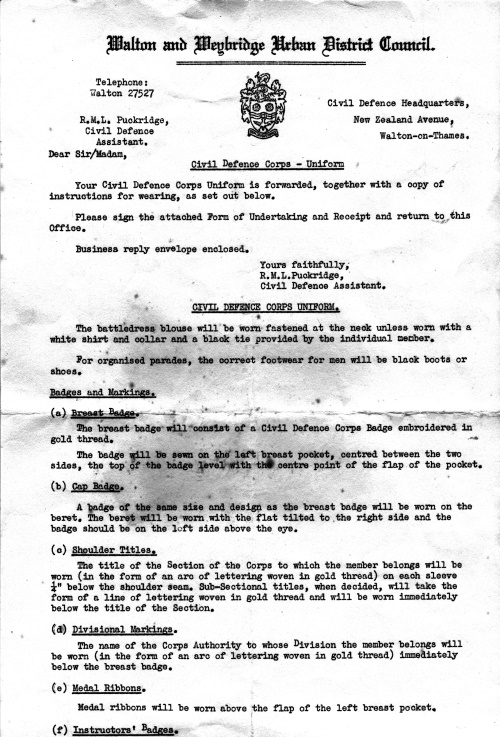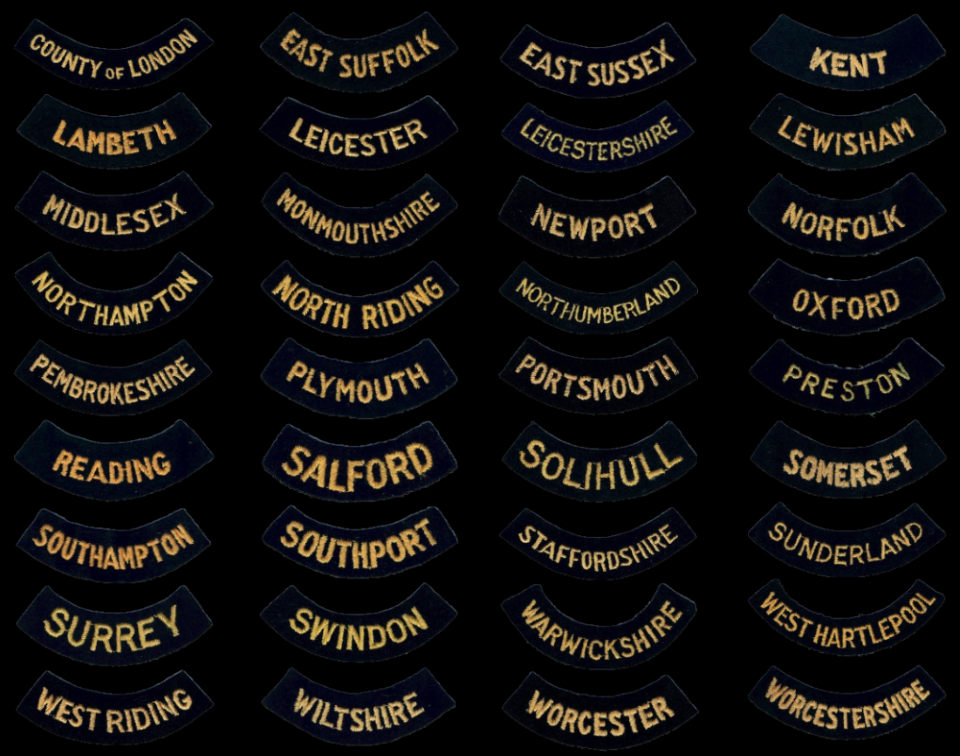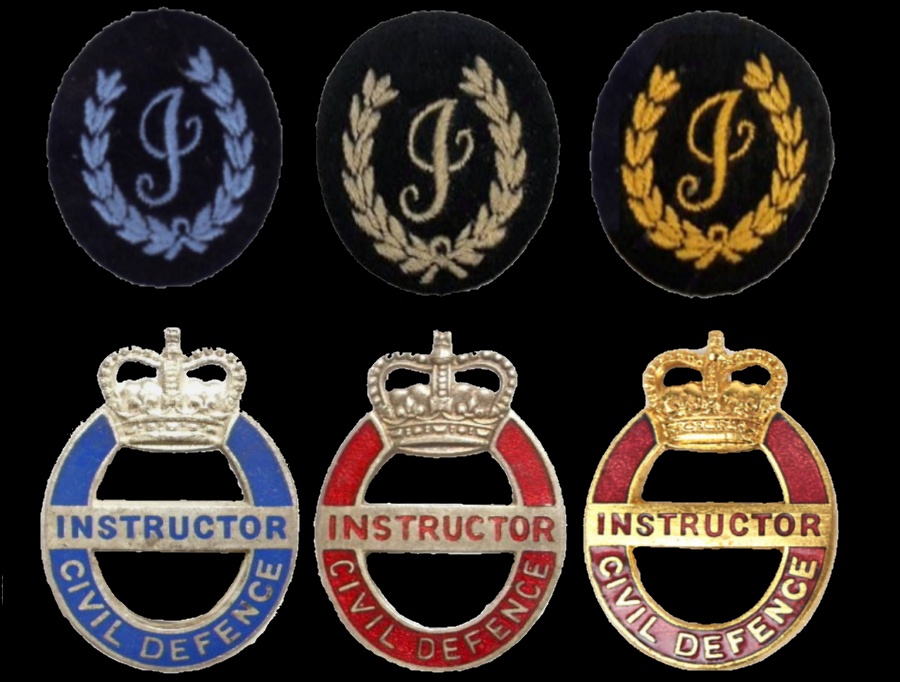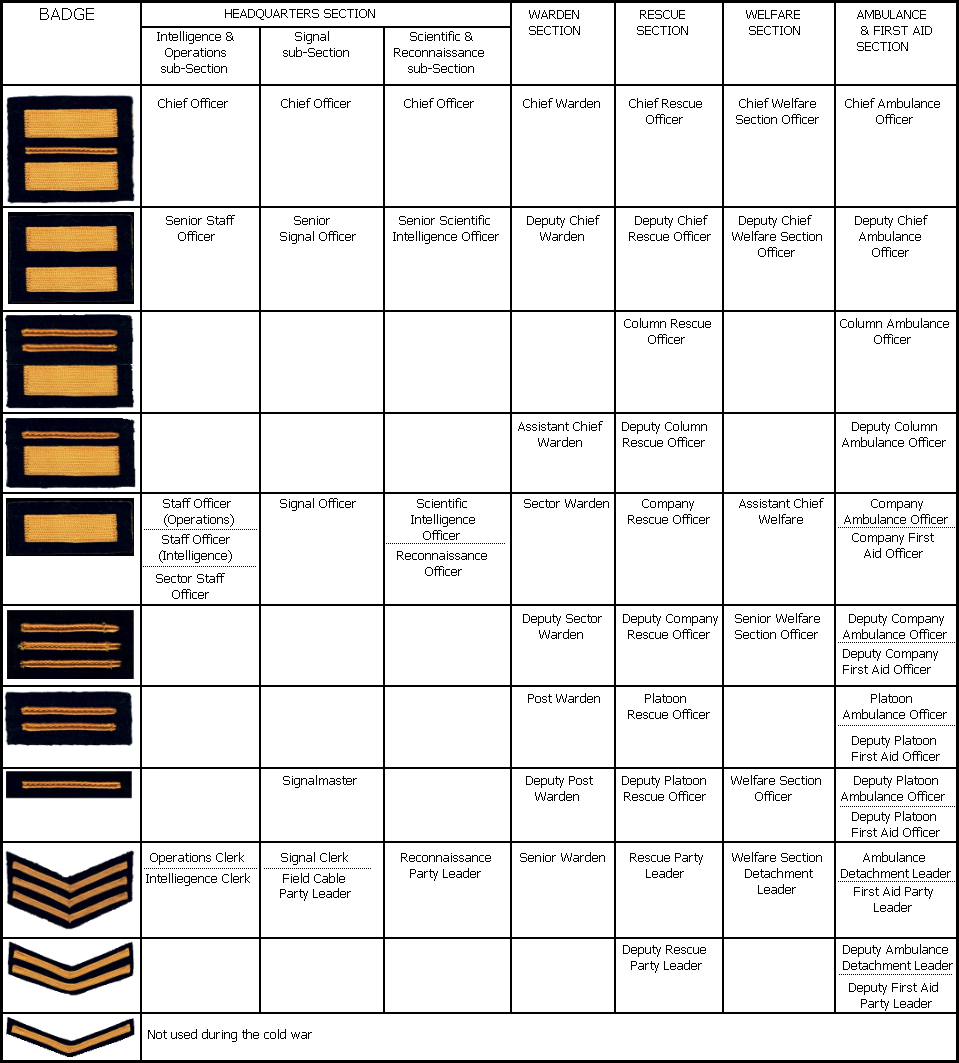Civil Defence Corps Badges
The badges described here are those used by the UK Civil Defence Corps during the Cold War. One frequently sees badges miss-described on auction sites, this page is an attempt to be definitive. Badges which show "Civil Defence Corps" cannot be WWII, as the Corps was not formed until 1949!You will also find printed cloth badges these will be fakes or WWII as all cloth badges from the Cold War period were embroidered, as were most WWII badges. WWII badges were embroidered with gold thread, and Cold Ward badges with yellow thread. There are also a number of other badges that were issued during the early life of the Corps, for sections that either only existed for a short time, or that were re-named. I don't have any of these.
Uniform
The Civil Defence Corps uniform regulations were pretty strict, although you might notice some variations, depending on how strict the local senior officer and section officers were. The uniform consisted of a midnight blue battledress blouse and either trousers or a skirt, of army '1949' pattern, made of serge, with composite black corps badges. Volunteers had to supply their own white shirts or blouses, black ties and black shoes. Two sections/sub-sections had additional uniform, in the form of hob-nailed boots, gaiters and army type denims, these were Rescue and Headquarters Signal B. What came from stores bore little resemblance to what was put on requisition forms, and it was said that uniforms fitted where they touched. My own uniform, as supplied would have suited a 7ft 6inch man weighing about twice as much as me. You either had to do the alterations yourself, get replacements (not easy), or pay someone to do it for you, there was a chance you might be able to swap with someone else, my mother altered mine.
Civil Defence Corps Corps
badge
The Civil Defence Corps badge was worn on the beret and the left breast pocket of the battledress blouse. The beret was worn so that the badge was centred over the left eye.
County badges
Beneath the breast pocket Corps badge was worn the county or divisional badge, a selection of which is shown below. According to uniform instructions the badge was to be sewn so that it touched the bottom edge of the breast pocket badge. The old Metropolitan boroughs were covered by a single County of London badge. The six counties of Northern Ireland were covered by a single Northern Ireland badge.
Corps section badges
Section badges were worn one finger width below the seam on both shoulders, with sub-section badges, where appropriate, immediately below.
First Aid badges
Members of the Ambulance and First Aid
section and some others were trained by one of the major first aid
organisations, St John Ambulance, British Red Cross or the St
Andrews Ambulance. Training was to the advanced standard with both a
practical and a theoretical examination, the latter being conducted
by a doctor. Badges were worn four inches above the cuff of the
right sleeve of the battledress blouse, unless the holder was also
qualified as an instructor, in which case they were worn as
described above.
In Scotland the scheme was different,
there being no Ambulance and First Aid Section, instead there were
Casualty Wardens who wore a letter 'C' within a laurel of thistles
(again on the lower left sleeve). As the Scottish Ambulance Service
carried out the functions of the Ambulance Section of the Civil
Defence Corps in Scotland, casualty wardens were present to provide
first aid cover until the Scottish Ambulance Service arrived to take
over.









